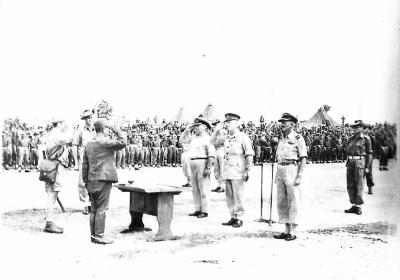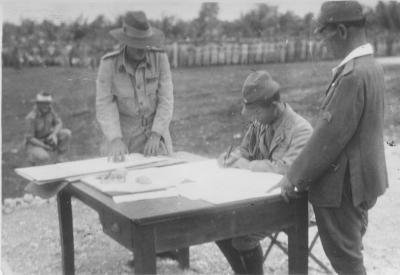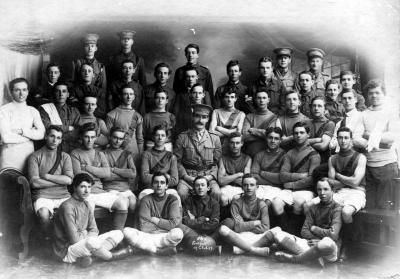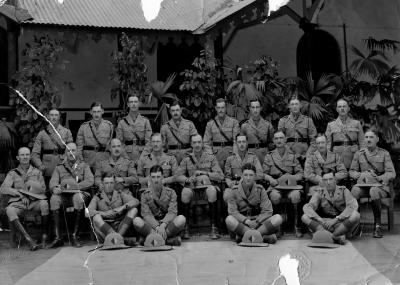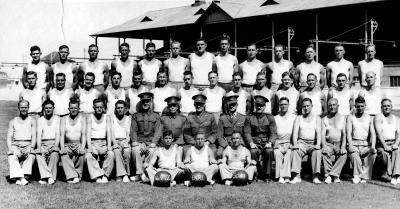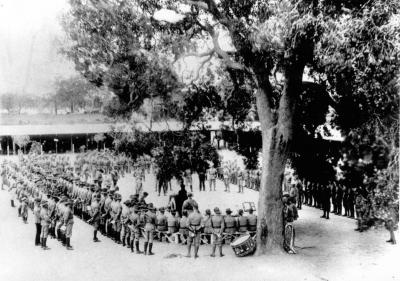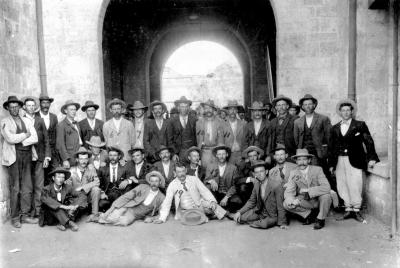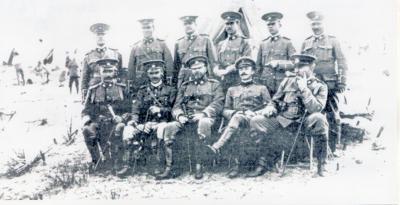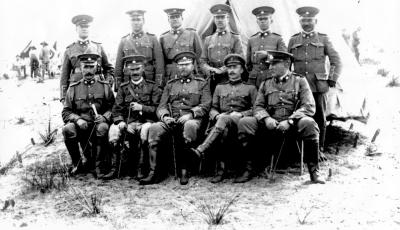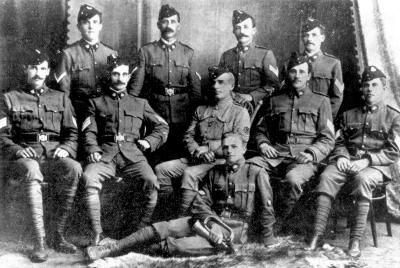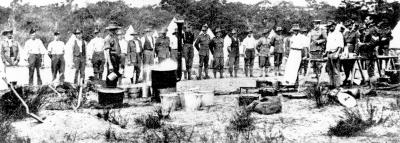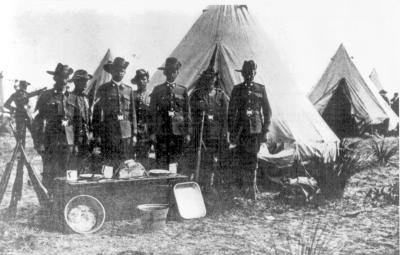World War 2, South West Pacific Theatre, Surrender Ceremony, ROBERTSON,1945
General ADACHI and General ROBERTSON prior to signing of Japanese surrender, 15-9-1945
Lieutenant General Hatazo Adachi, GOC XVIII Japanese Army, surrendered his sword to Major General H C H Robertson, GOC 6th Australian Division, before 3,000 troops of the 6th Division during the surrender ceremony at Wom Airstrip near Wewak, New Guinea.
Despite the designation of VP Day of 15 August 1945, the formalities of military surrender took several weeks to coordinate and finalise. In more chivalrous times, a defeated commander would offer his sword in submission, but would, as an act of grace, be permitted to retain it. This was not the case following VP Day. The act of handing over the swords was deliberately conducted so that the Japanese would lose face and impress upon them the fact that they had been defeated. The surrendered swords were retained by the victors. Another factor was the conduct of Japanese forces during the war and their treatment of prisoners of war. General Blamey expressed the general feeling quite succinctly. "In receiving your surrender, I do not recognise you as an honourable and gallant foe, but you will be treated with due but severe courtesy in all matters. "
General MacArthur had issued directions, as the Supreme Commander of the Allied Powers, that no separate surrender was to be taken by subordinate formations, until after the signing on the Missouri in Tokyo Bay on 2 September. There was still hesitation with some Japanese Commanders to enter into any surrender negotiations until they received direct instructions from Tokyo.
Accordingly, on 9 September 1945 at Morotai, General Blarney, Commander-in-Chief of the Australian Military Forces, accepted from Lt. Gen. Fusataro Teshima, commanding the Japanese Second Army, the surrender of all enemy forces remaining in Borneo and the Netherlands East Indies east of Lombok Island. Blarney delegated to Lieutenant General Vernon Sturdee the task of accepting the surrender of the Japanese 1st Army Area of Command, in New Britain, New Ireland, the Solomons, New Guinea. Ocean Island and Nauru. Major General Wootten accepted the surrender in British Borneo, General Milford in Dutch Borneo. Brigadier Dyke in Timor and Major General Robertson at Wewak.
Details
Details
P1990.42
AHMS IRN 30685
Open in Google Maps
Nearest geotagged records:
Australian Army Museum of Western Australia
Australian Army Museum of Western Australia
More items like this
Other items from Australian Army Museum of Western Australia
- World War 1, Western Australia, Perth, West Australian Rifles (86 Infantry) Football Team, 1917
- Inter War, India, Manchester Regiment
- World War 2, Western Australia, SMITH, 18 Australian General Hospital, 1942
- World war 2, South Australia, No 4 Southern Command, Physical and Recreational Training School, Wayville, 1940
- Pre 1914, Western Australia, Goldfields Regiment
- Pre 1914, Western Australia, Kalgoorlie, Goldfields Regiment,
- Pre 1914, 2nd Anglo Boer War, Western Australia, Kalgoorlie, 2nd Commonwealth Contingent, 1902
- Pre 1914, Western Australia, Perth Karrakatta camp, Goldfields Regiment
- pre 1914, Western Australia, Karrakatta, Goldfield Infantry Regiment Officers
- Pre 1914, Western Australia, Boulder, Goldfields Infantry Regiment, 1903
- Pre 1914, Western Australia, Karrakatta, Goldfields Infantry Regiment, 1906
- Pre 1914, Western Australia, Karrakatta, Goldfields Infantry Regiment, 1906

